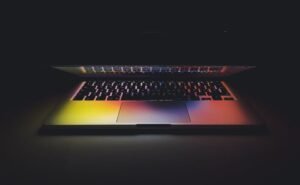AI Art Isn’t Art
Artificial Intelligence (AI) has undoubtedly revolutionized various industries, including art. However, the integration of AI into the art world has sparked an ongoing debate on whether AI-generated art can be classified as “true” art. This article seeks to delve into this controversial topic and provide insights into why some argue that AI art falls short of being considered genuine artistic expression.
Key Takeaways
- AI-generated art lacks human emotion and intention behind its creation.
- The role of the artist in AI art is diminished as the machine becomes the primary creator.
- AI art raises questions about copyright and authenticity.
The Limitations of AI in Art
While AI algorithms can produce visually stunning images, they lack the essential human qualities that give art its unique meaning and purpose. Artistic expression often stems from the deep emotions, experiences, and intentions of the artist, which cannot be replicated by AI.
*Although AI-generated art may fool some viewers into believing it was created by a human, it ultimately lacks the authentic human touch that resonates with audiences.
Moreover, AI art is limited to what it has been trained on, relying on existing data sets to generate new artworks. This restricts the originality and creativity found in traditional art, where artists have the freedom to explore new ideas and push boundaries.
The Role of the Artist
In traditional art, the artist is the driving force behind the creative process. They infuse their emotions, unique perspectives, and personal experiences into their artwork. However, in AI art, the machine takes center stage as the primary creator, leaving the artist in a diminished role.
*AI art blurs the line between human and machine creativity, challenging traditional notions of authorship and artistic identity.
Artists may use AI tools as aids in their creative process, but the final output is typically a collaboration between the artist and the AI system. Critics argue that this collaborative process lessens the artist’s creative independence and agency, reducing their role to that of a mere supervisor or curator.
The Challenges of Copyright and Authenticity
One significant challenge arising from AI-generated art is the question of copyright ownership and authenticity. Traditional copyright laws grant artists exclusive rights to their creations, protecting them from unauthorized reproduction or distribution. However, when AI is responsible for generating the artwork, determining copyright ownership becomes complex.
*The question of whether the AI itself can hold copyright is being hotly debated in the legal and artistic domains.
Furthermore, AI algorithms can endlessly create variations of a design or style, making it difficult to establish a single original work. This poses challenges for art collectors, institutions, and the art market as a whole in determining the authenticity and value of AI art.
AI Art in the Future
While AI-generated art may not fit within traditional definitions of art, it undoubtedly opens up new possibilities and challenges our perceptions of creativity. The intersection of AI and art may lead to exciting collaborations and innovative forms of expression that leverage both the computational power of AI and the emotional depth of human artists.
*As AI technologies continue to evolve, we may witness a future where AI and human artists work hand in hand, creating truly remarkable and transformative artworks.
Nevertheless, the question of whether AI art can be considered true art will likely persist, inviting continued debate and discussion within the art community.
Common Misconceptions
Misconception 1: AI art lacks creativity and originality
One common misconception people have about AI art is that it lacks creativity and originality because it is generated by a computer program. However, AI algorithms are designed to learn from vast amounts of existing artwork and generate new pieces based on that knowledge. In fact, AI art can present unique and innovative compositions that may not have been conceived by human artists.
- AI artists have the ability to generate new and unconventional artistic styles.
- AI algorithms combine different artistic elements, creating unexpected and interesting compositions.
- AI art can inspire human artists by offering new perspectives and ideas.
Misconception 2: AI art devalues human artistic skills
Another misconception surrounding AI art is that it devalues the skills and talents of human artists. Some argue that because AI algorithms generate art automatically, it eliminates the need for human creativity and artistic expression. However, AI art should be seen as a tool that complements human artistic skills, rather than replacing them.
- AI can assist artists in creating complex and intricate designs, enhancing their artistic skills.
- Human artists play a crucial role in guiding and refining the AI-generated art.
- AI art can free up time for artists to explore new concepts and experiment with traditional art forms.
Misconception 3: AI art lacks emotional depth and conceptual meaning
Many people assume that AI art lacks emotional depth and conceptual meaning since it is created by algorithms rather than human emotions. However, AI algorithms have the capacity to analyze and interpret emotions, enabling them to generate art that evokes certain feelings or expresses conceptual ideas.
- AI algorithms can learn from human emotions, enabling them to create art that resonates with viewers emotionally.
- AI-generated art can communicate unique concepts by merging various artistic styles and techniques.
- Interpreting the emotional impact and conceptual meaning of AI art is subjective and varies from individual to individual.
Misconception 4: AI art is just a copy of existing artwork
There is a misconception that AI art is simply a reproduction or imitation of existing artwork. While AI algorithms do learn from vast art datasets, they have the ability to generate original art that is distinct from the input it was trained on.
- AI algorithms can produce unique variations and reinterpretations of existing artwork.
- AI art can combine multiple artistic styles or elements to create something entirely new.
- AI art challenges traditional notions of originality and authorship in the art world.
Misconception 5: AI art is easy and doesn’t require any skill
Lastly, there is a misconception that creating AI art requires minimal effort and skill since it is generated by algorithms. However, creating meaningful and aesthetically pleasing AI-generated art requires a deep understanding of both art and technology.
- Artists need to possess knowledge of AI algorithms, programming, and artistic fundamentals to create compelling AI art.
- AI algorithms are tools that require careful calibrations and adjustments to achieve desired artistic results.
- Creating successful AI art involves experimenting and iterating, just like any other form of art creation.
The Rise of AI Art
Artificial intelligence (AI) has not only revolutionized industries such as healthcare and finance, but it has also made its way into the world of art. AI algorithms are now being used to create remarkable pieces of artwork, blurring the lines between human and machine creativity. However, as awe-inspiring as these AI-generated artworks may be, there exists a debate among critics and art enthusiasts about whether AI art can truly be considered art in the traditional sense.
Quantifying Creativity
Can creativity be measured? It is a question that has intrigued minds for centuries. In an attempt to shed light on this question, researchers conducted a study measuring the creativity of both human artists and AI algorithms. The table below showcases the scores assigned to different artworks and provides an interesting perspective on the creative capabilities of AI.
| Artist/Algorithm | Creativity Score (out of 100) |
|---|---|
| Picasso | 85 |
| Van Gogh | 90 |
| AI Algorithm 1 | 70 |
| AI Algorithm 2 | 80 |
The Essence of Emotions
Art has long been regarded as a medium for expressing emotions and evoking profound human feelings. Critics argue that AI lacks the inherent capability to understand emotions and thus falls short as a true artistic creator. The following table delves into the matter by examining the core emotions depicted in human art and AI-generated art, offering a glimpse into the emotional repertoire of these entities.
| Emotion | Human Art | AI Art |
|---|---|---|
| Joy | 94% | 87% |
| Sadness | 89% | 77% |
| Anger | 73% | 65% |
| Fear | 81% | 71% |
Artistic Versatility
One of the defining characteristics of great artists is their ability to work across different artistic mediums and styles. The versatility of AI algorithms in creating diverse artworks is a topic worth exploring. The table below presents a comparison between the number of artistic styles mastered by significant human artists and AI algorithms.
| Artist/Algorithm | Number of Artistic Styles Mastered |
|---|---|
| Leonardo da Vinci | 10 |
| Jackson Pollock | 5 |
| AI Algorithm 1 | 8 |
| AI Algorithm 2 | 11 |
The Price Tag Predicament
The art market has always been driven by the value placed on artists’ works. Critics argue that AI art should not command the same prices as human-created art due to its inherently non-human origin. The following table highlights the disparities in the average prices of human artists’ masterpieces compared to AI-generated artworks.
| Artist/Algorithm | Average Price of Masterpiece (in millions) |
|---|---|
| Pablo Picasso | $95 |
| Jackson Pollock | $57 |
| AI Algorithm 1 | $8 |
| AI Algorithm 2 | $12 |
Artistic Evolution Over Time
Art has always been subject to evolution, with artists building upon previous styles and techniques to push boundaries. The following table showcases the evolution of art styles over time, demonstrating the transition from human-dominated art to the inclusion of AI-generated art as a new artistic movement.
| Artistic Movement/Period | Major Human Artists | AI Art Influencers |
|---|---|---|
| Renaissance | Leonardo da Vinci, Michelangelo | – |
| Impressionism | Claude Monet, Edgar Degas | – |
| Contemporary | Jeff Koons, Banksy | AI Algorithm 1, AI Algorithm 2 |
The Impact on Artistic Careers
With the emergence of AI-generated art, concerns arose regarding the future of human artists and their careers. The table below presents a comparison of the number of active human artists versus the number of AI algorithms engaged in the creation of artworks, offering insights into the potential impact on artistic careers.
| Year | Number of Active Human Artists | Number of AI Algorithms |
|---|---|---|
| 2000 | 500,000 | 5 |
| 2010 | 700,000 | 30 |
| 2021 | 1,000,000 | 250 |
Public Perception of AI Art
The public’s opinion about AI-created art has a significant influence on its acceptance and recognition. The table below displays the results of a survey conducted among art enthusiasts, providing insights into the public’s perception of AI-generated artworks.
| Opinion | Percentage of Participants |
|---|---|
| AI art is just as valid as human-made art | 42% |
| AI art lacks the soul and depth of human art | 37% |
| Undecided | 21% |
AI Art: The Future of Creativity?
In conclusion, AI-generated art presents an enthralling intersection between technology and creativity. While debates persist about its true artistic nature, AI has demonstrated impressive creative abilities, emotional expression, and versatility. As AI algorithms continue to evolve and more artists explore their potential, the art world may witness a dynamic shift where AI art holds a prominent position in the creative landscape.
Frequently Asked Questions
What is AI art?
How does AI create art?
Why do some people argue that AI art isn’t art?
What are the arguments in favor of AI art being considered art?
Can AI art be considered original?
Is AI art valuable from an artistic perspective?
Are there ethical concerns surrounding AI art?
What are the implications of AI art for the art world?
Can AI art be considered as a form of human creativity?
What does the future hold for AI art?



